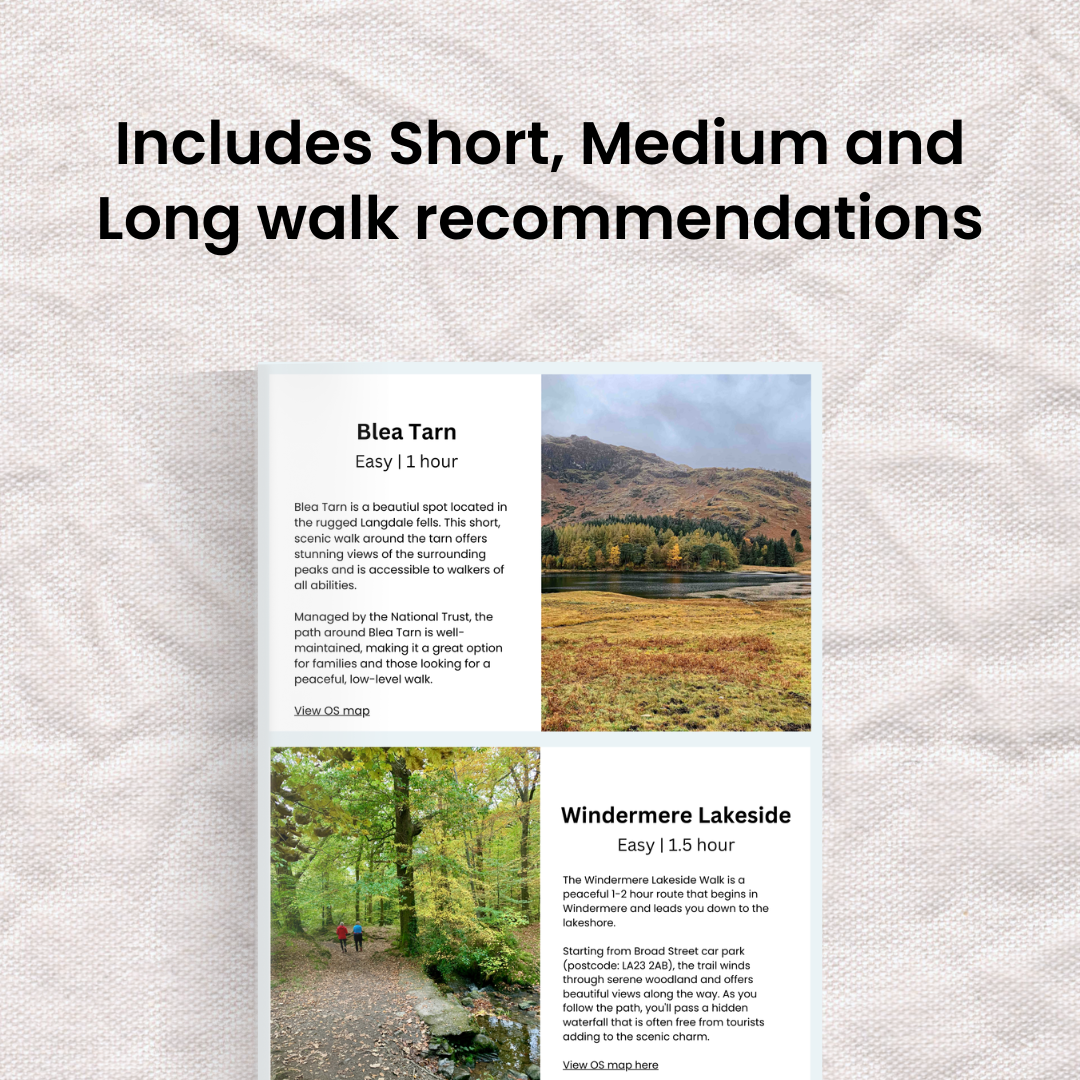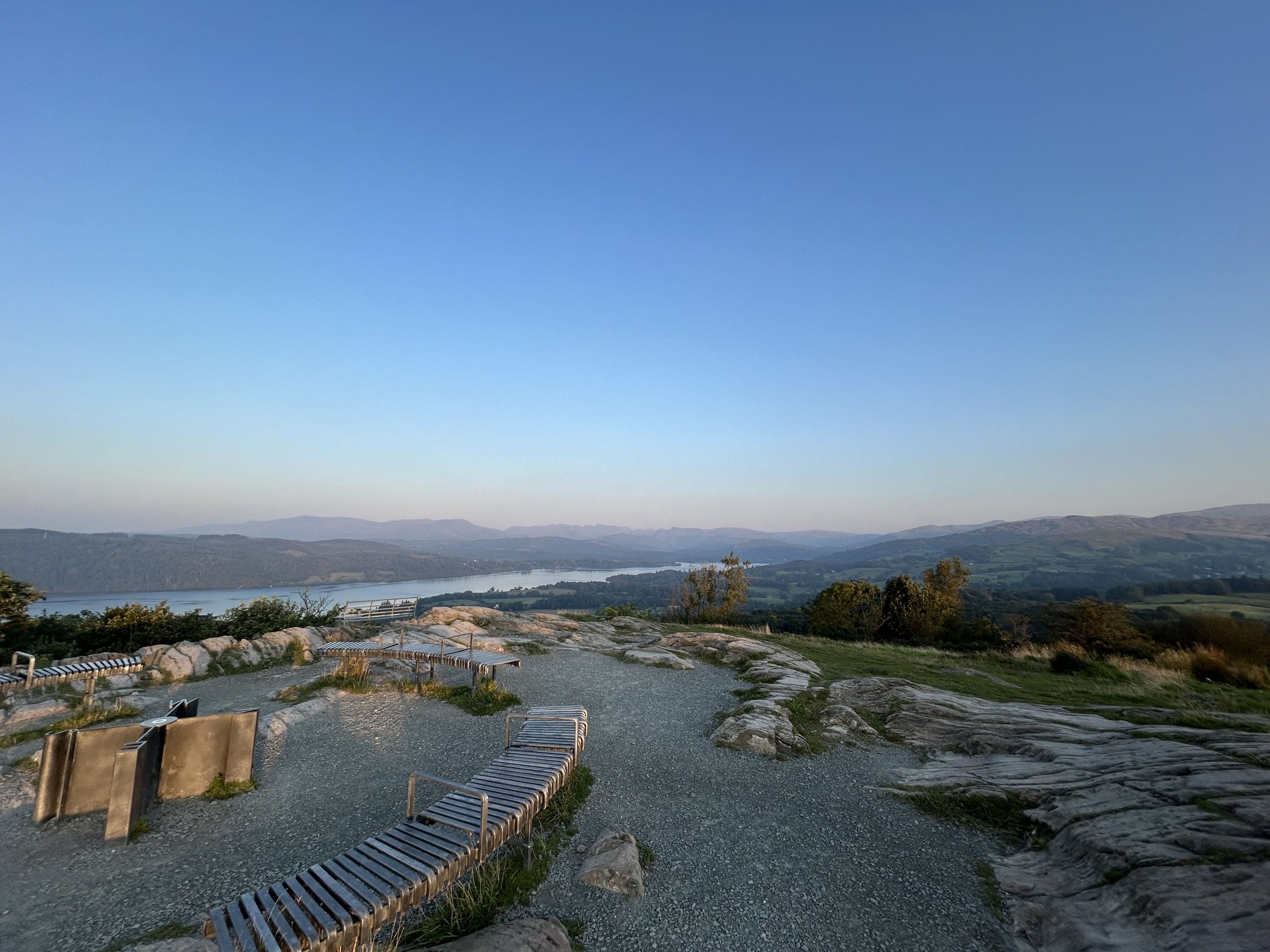Wild Camping in the Lake District
The Lake District is one of the most beautiful places in the UK to hike, swim, run, and explore. And for those looking to immerse themselves fully in the landscape, wild camping can be an unforgettable experience. I’ve wild camped here several times while on multi-day hikes, and there’s nothing quite like waking up high in the fells as the sun rises.
However, wild camping has become a growing issue in the Lake District. As more people give it a go, not everyone is treating the land with the respect it deserves. Unfortunately, it's not uncommon to find abandoned tents, rubbish, toilet paper, and even campfires left smouldering, all of which damage the environment and ruin the experience for others.
Is wild camping legal in the Lake District?
Technically, wild camping is not legal without the landowner’s permission. That said, it has long been tolerated in the high fells if campers are discreet, respectful, and follow a strict "leave no trace" approach. But due to a rise in irresponsible behaviour, local councils — including Cumberland Council — are now issuing £100 fixed penalty notices to those who camp where they shouldn't or cause damage.
The three golden rules of wild camping
If you're keen to wild camp in the Lake District, please follow these essential guidelines:
Leave no trace – This means everything. Take all your rubbish, leftover food, toilet waste, and gear with you. Leave the spot exactly as you found it, or better.
Stay high, stay hidden – Always camp above the highest fell wall, well away from roads, car parks, villages, and footpaths. You should be out of sight, arriving late and leaving early.
No fires, ever – Open fires are not just unnecessary, they’re dangerous. Bring warm layers, a reliable stove, and embrace the chill, it's part of the adventure.
Alternatives: campsites in the Lake District
If you're not ready for wild camping, or simply want a base with a few more facilities, there are plenty of excellent campsites across the Lake District. Some are basic and perfect for a back-to-nature experience, while others offer hot showers, electric hook-ups, and even glamping pods.
A few popular options include:
Great Langdale Campsite – Nestled among the fells, great for walkers.
Wasdale Head Campsite – Ideal if you're tackling Scafell Pike.
Keswick Camping and Caravanning Club Site – A larger site with full facilities and lake views.
Syke Farm Campsite (Buttermere) – A simple, scenic site next to the fells and lakes.
FAQs
Where can I legally wild camp in the Lake District?
There are no areas in the Lake District where wild camping is officially permitted without consent. That said, areas above the highest fell walls, well away from roads, car parks, and villages, are more likely to be tolerated if you camp responsibly.
Can I get fined for wild camping in the Lake District?
Yes. Councils like Cumberland Council have started issuing £100 fixed penalty notices to people caught wild camping irresponsibly, especially in visible or popular locations, or where damage or litter is left behind.
What are the rules for wild camping in the Lake District?
The key rules are:
Camp high and out of sight.
Leave no trace, pack out all rubbish and waste.
No fires or loud noise.
Arrive late and leave early.
Camp in small groups (ideally solo or two people).
What do I need to take wild camping in the Lake District?
At a minimum, you'll need a lightweight tent, sleeping bag, sleeping mat, warm layers, food, water, a stove (no fires), a head torch, and a way to pack out all waste. A proper kit list ensures both safety and comfort in the mountains.
Are there any wild camping spots you recommend in the Lake District?
While I won’t give exact GPS coordinates (as part of respecting the land), areas around Great Langdale, Eskdale, Buttermere, and Ennerdale offer good options if you're experienced, fit, and willing to hike into the fells.
Walking to Swirl How from the Old Man of Coniston
Hey, while you’re here, checkout my ultimate Lake District Guide & Digital Map
Save time and plan your perfect Lake District trip with my downloadable guide and digital map
My full Lake District guide includes 18+ recommended walks, my favourite cafes and restaurants, plus helpful tips for when it comes to planning your trip.
Kit list for hiking in the Lake District
Here's a list of items to prepare when hiking in the mountains:
Sturdy walking boots and socks with good ankle support
You can get a decent pair of boots from Cotswold Outdoors, Mountain Warehouse or Blacks. You don’t need to spend a load of money, but anything with ankle support should do the job. I have the Scarpa Rush TRK Gore-Tex boots and they are fantastic!
Hiking socks: I personally use Smartwool merino wool socks which are incredibly comfy, help keep my feet dry
Daypack: when out walking in the Lakes, I always take my Osprey Talon 44L bag. I recommend the Osprey daypacks such as the Talon range for men and Tempest range for woman.
Waterproof jacket and trousers - even in the summer, taking a waterproof jacket that offers protection from the wind is key
You don’t need to spend a lot of money, but if you are going to be hiking often then investing in a good waterproof may be a good idea
Warm layers
Fleece - My go-to warm layer - Patagonia R1 Fleece
Warm gloves or mittens: I personally use the Rab Mens Pivot GTX Gloves and these worked well on my recent winter hiking trips.
Lightweight Gloves: For lower hills I recommend lightweight, fleece or quick drying fabric gloves. I personally use the Sealskinz unisex waterproof gloves if it is raining and the Montane Prism gloves if it is dry but windy (they are lighter and a little more comfy.
Neck bandana or scarf: For the chilly days on the mountain, I recommend bringing a neck gaiter or bandana. I recommend the Buff unisex bandana.
Map and compass (and the ability to use them)
Trekking poles: Trekking poles can reduce the impact on your joints by up to 20%. I recommend adjustable Black Diamond or Leki trekking poles
Food and water
Kendal Mint Cake is my favourite snack for any walk and is a famous snack still made in the Lake District
Water bladder / bottles: When out in the fells, I aim to drink at least 1L of water. I recommend the Osprey 2 litre water badder which can be used in most backpacks.
Sunscreen and Bug Spray
First aid kit - a small mix of plasters, Savalon (for bites and stings) and antiseptic wipes will do
Head torch: You will need a head torch with a decent power for any trips to the loo and more importantly the summit hike. I personally use a Petzl ACTIK® 600 CORE which is affordable and has a decent battery life. You’ll also need spare batteries as the cold will drain them quicker.
Mobile phone (with a full battery) + portable charger.
I recommend any Anker Power Bank as they are reliable and well made. I use the USB-C 10,000 maH with 20W model. It charges my phone and watch when wild camping and is a great lightweight option














